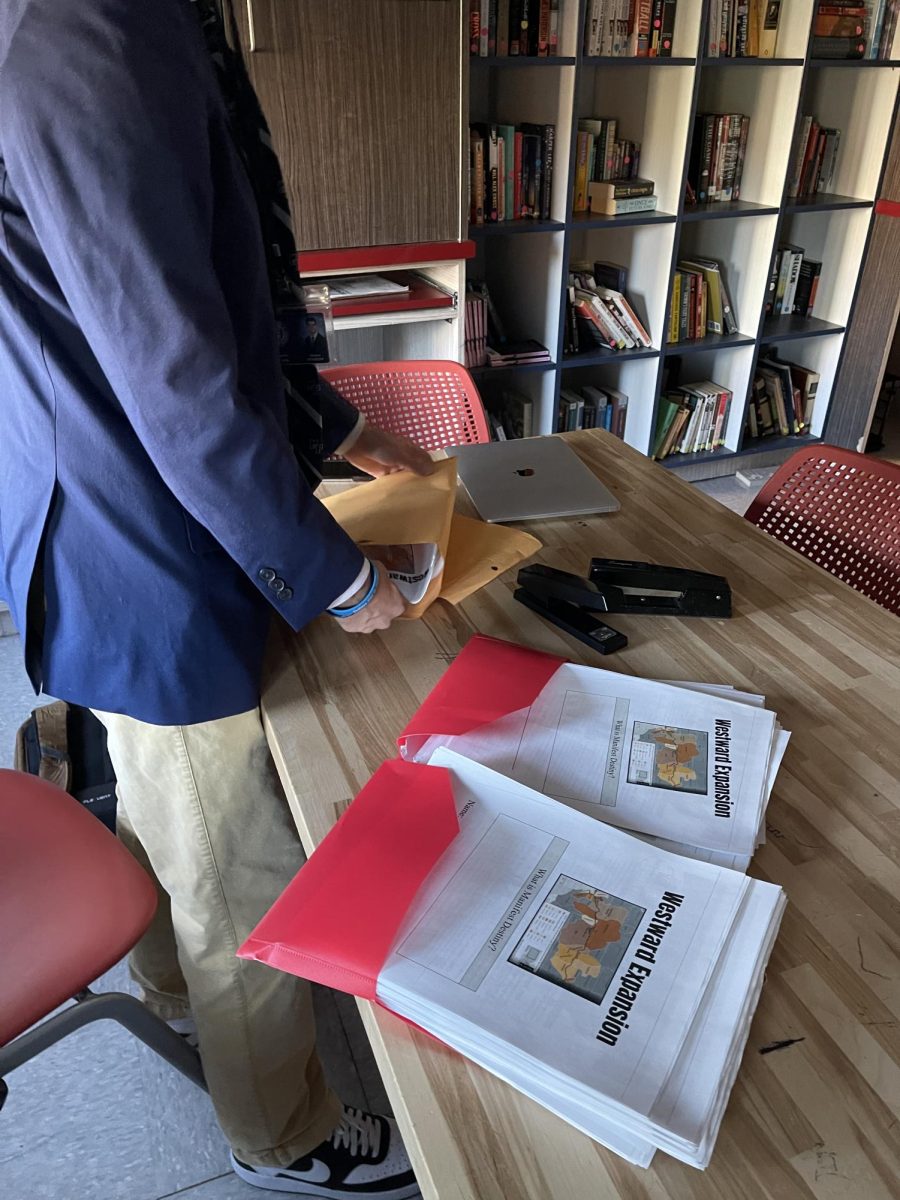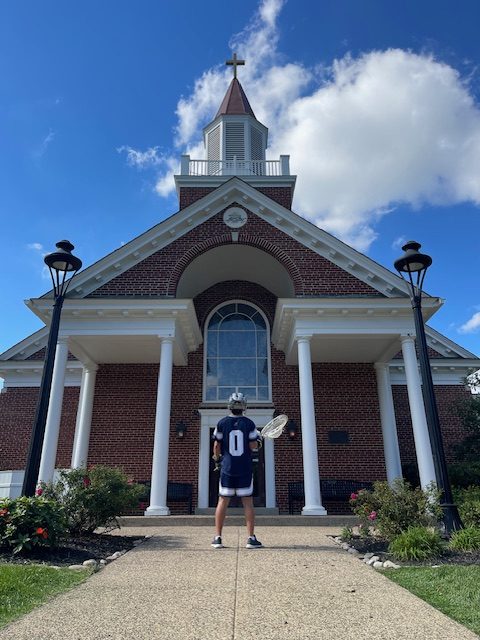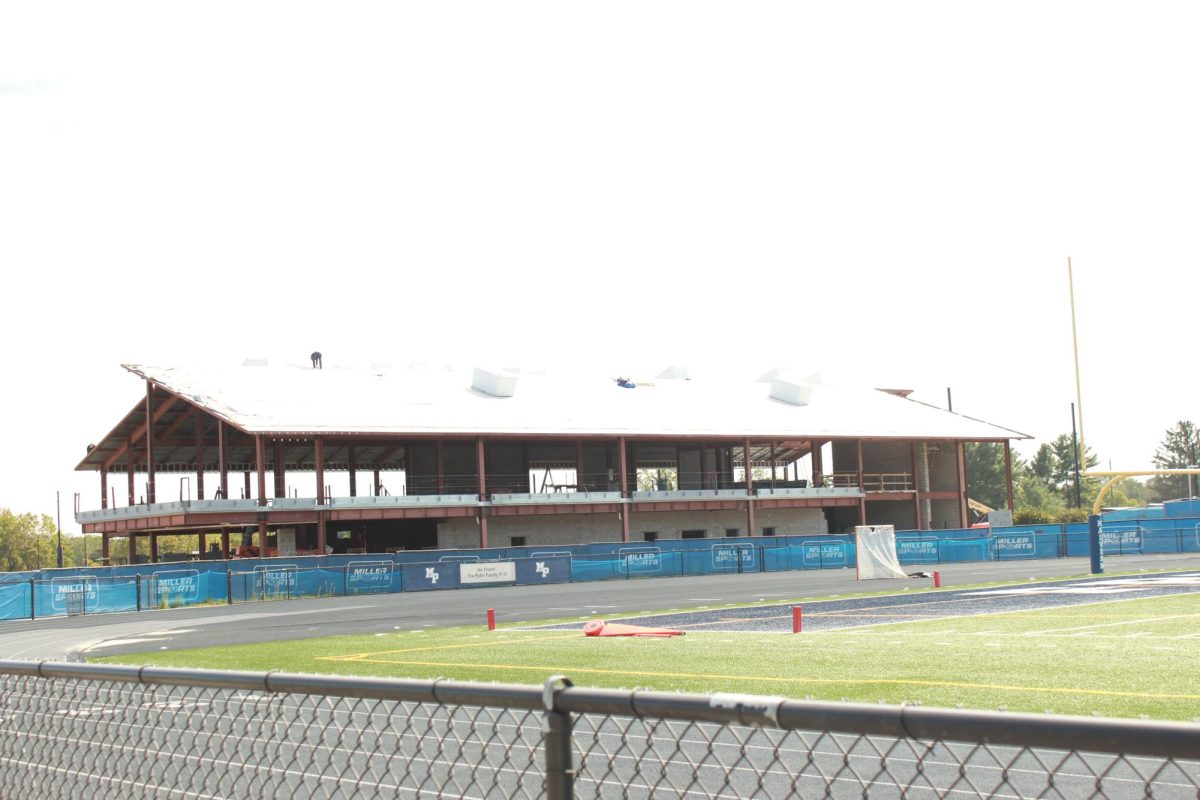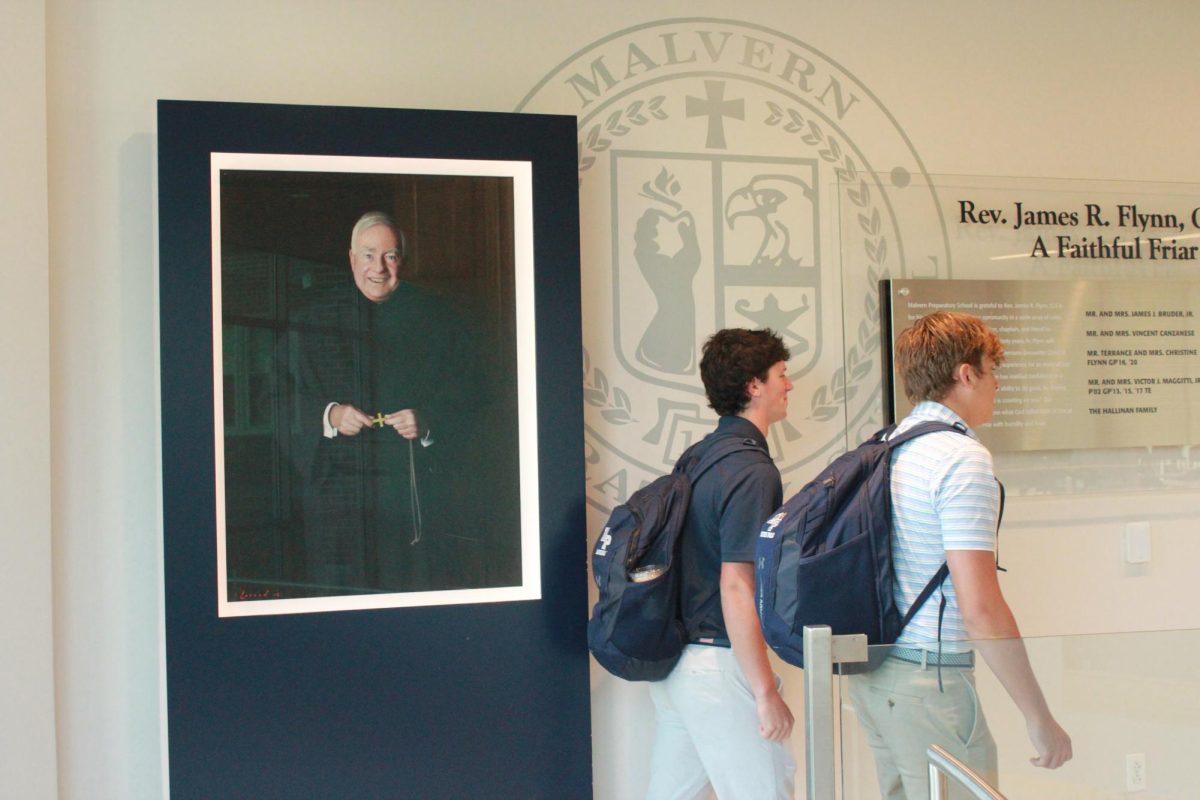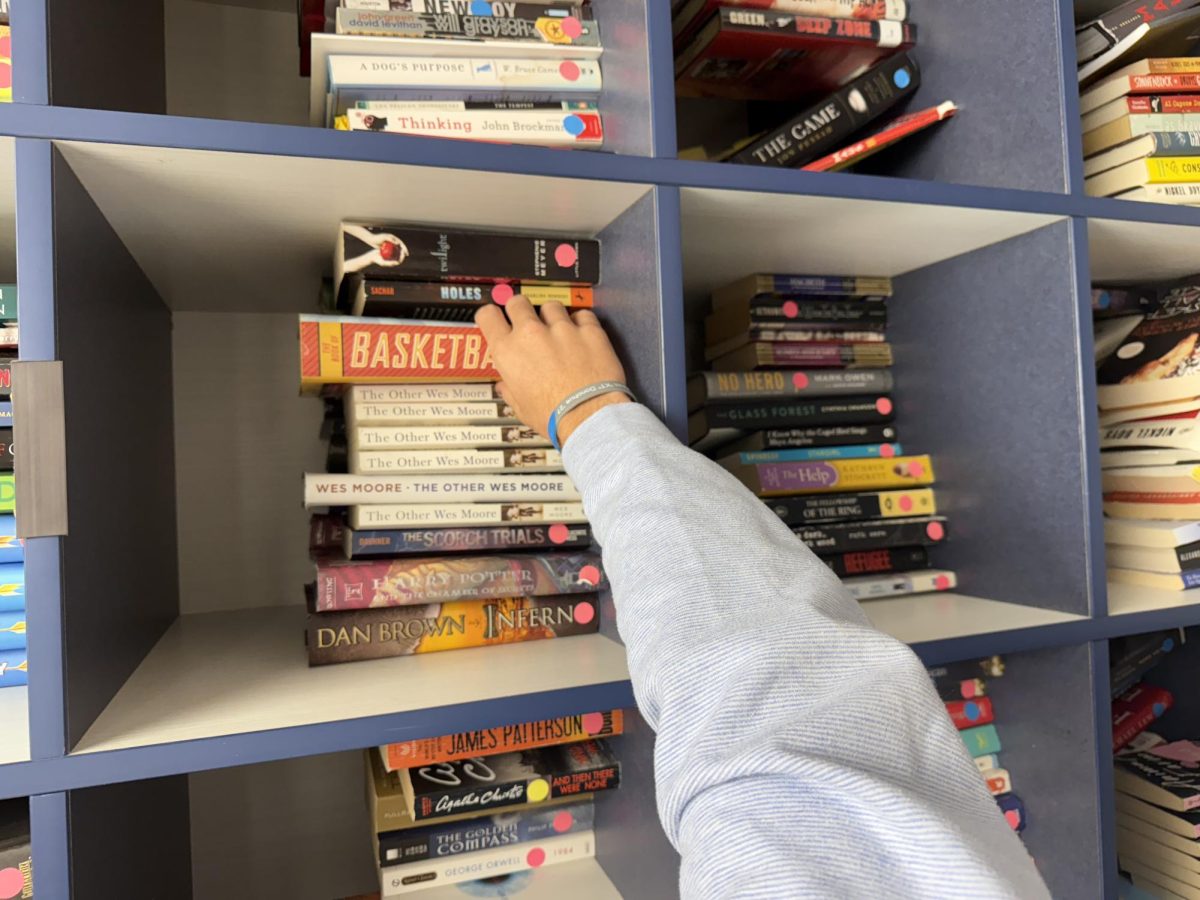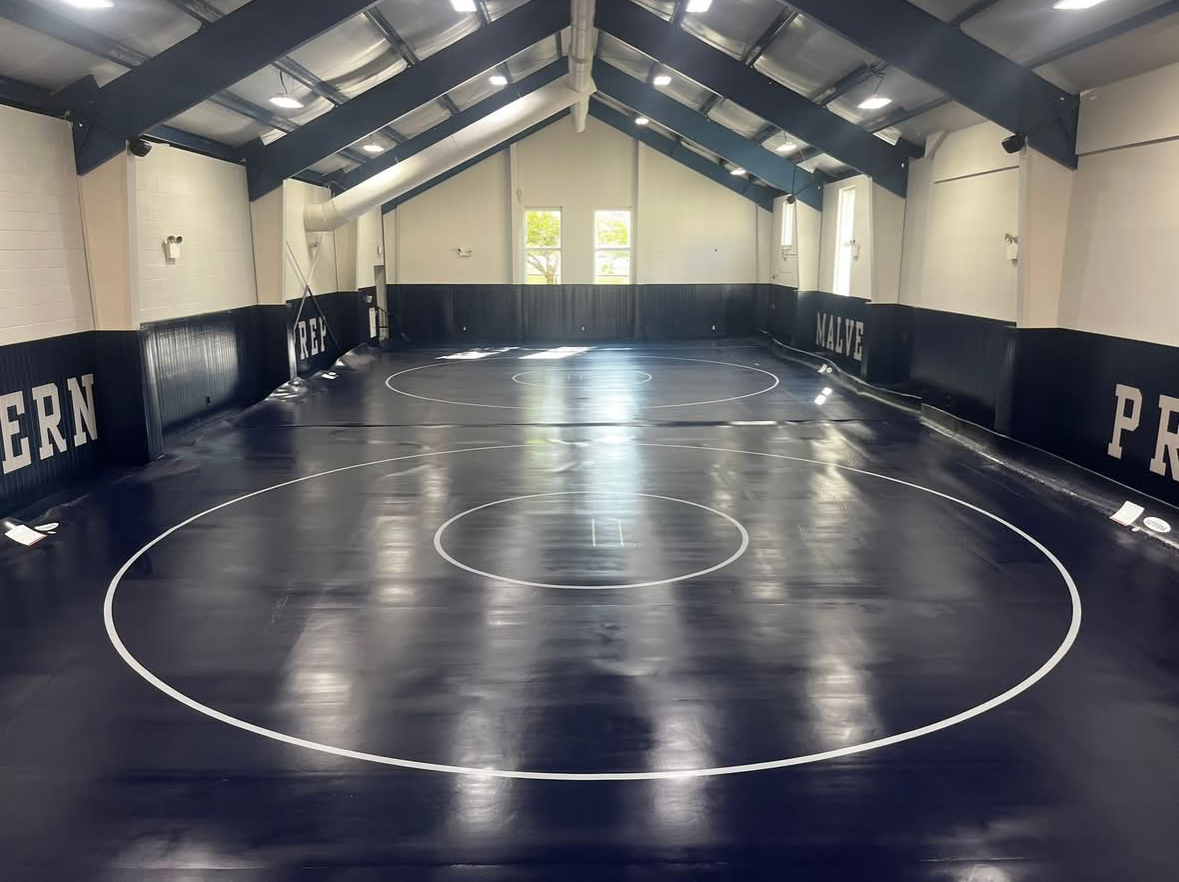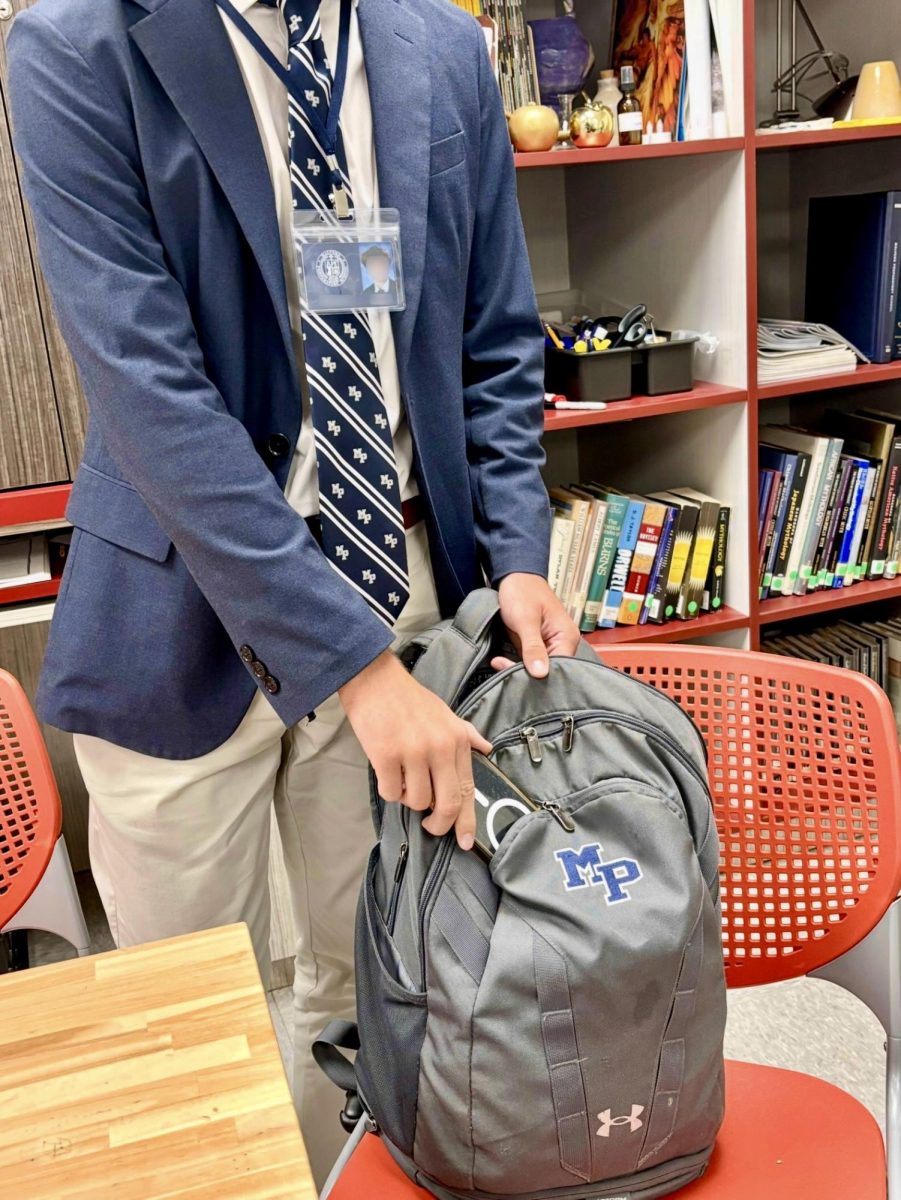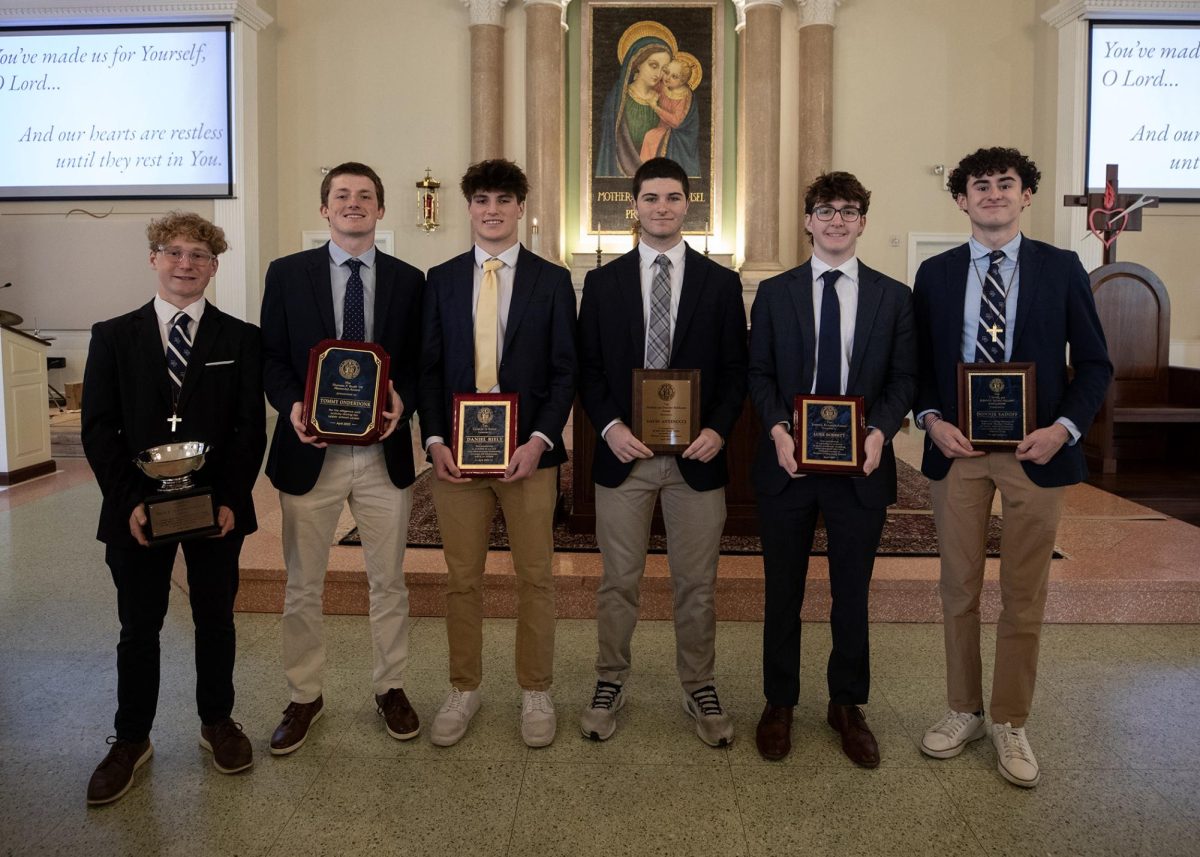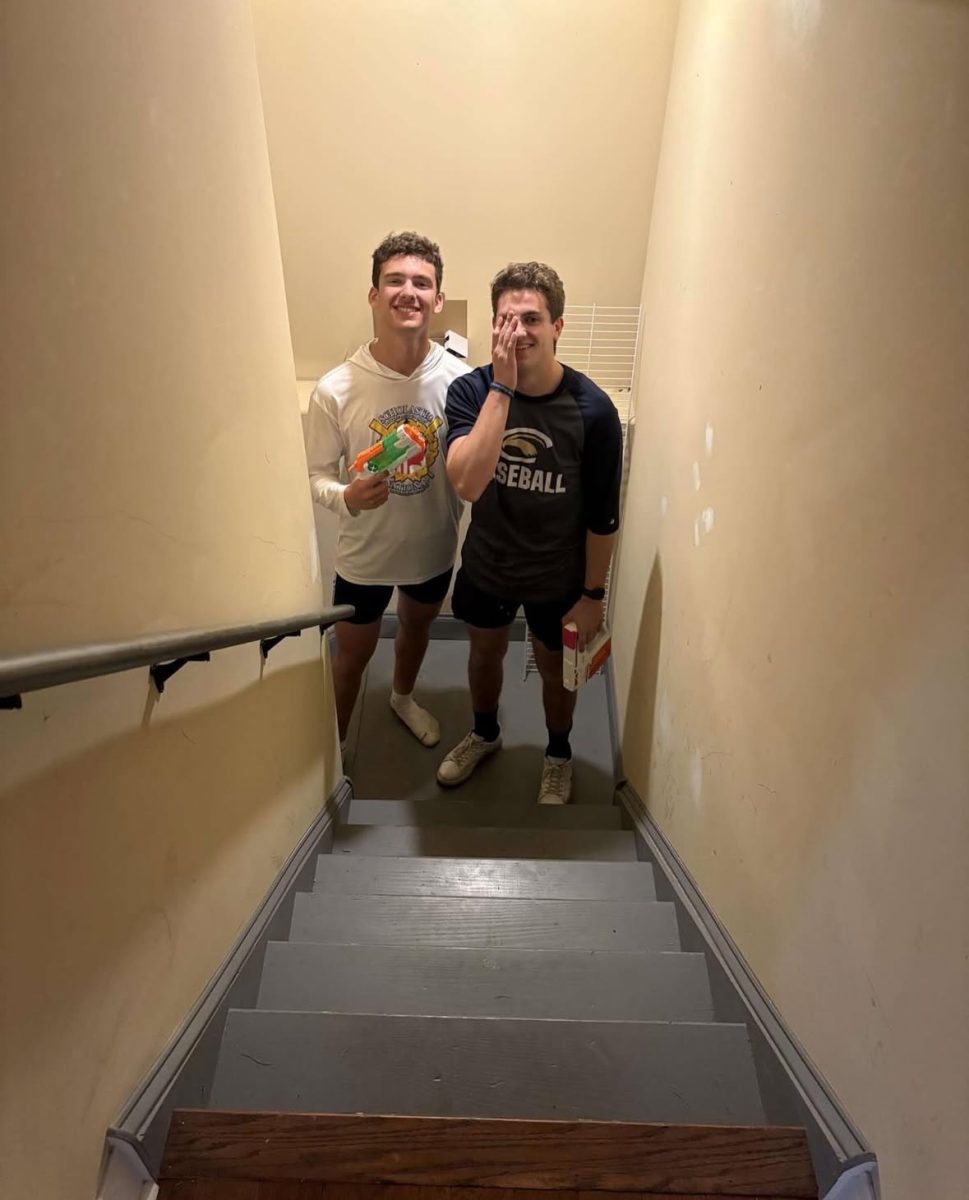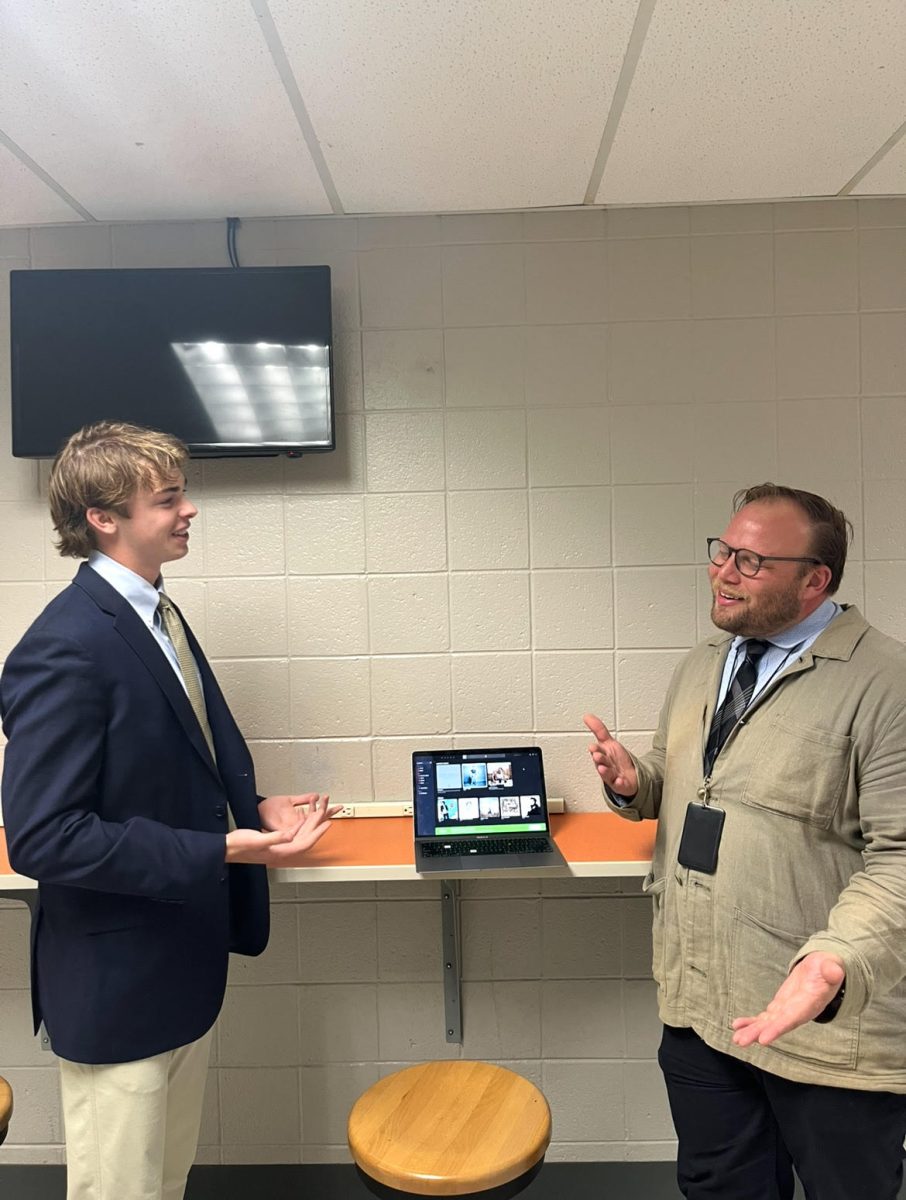Ten years ago, the Duffy Arts Center opened its doors to Malvern Prep, creating a gateway to an increase of popularity for the arts.
Fr. James Flynn remembers a lot from ten years ago, when construction was finished on the Duffy Arts Center. According to Flynn, the building was absolutely necessary for Malvern to have.
“We had an increasing amount of students who were interested in the arts,” Flynn said. “We wanted to make sure we could offer them something.”
The Duffy Center, named after former Headmaster Fr. David Duffy stands where Vasey Hall once stood, a theater that Flynn says, wasn’t good enough.
“The space we had was inadequate for the expansion of the program,” he said. “We also realized that the theater we had… was over fifty years old.”
“When the school was smaller, it was adequate,” he said. “But when we went from 250 students in the school to… 600, poor Vasey Hall wasn’t adequate.”
According to Flynn, there were multiple celebrations that took place during the transition between Vasey Hall and the Duffy Center.
“When we knocked Vasey Hall down, we had a party so that all the people who had been in plays were invited to come back,” he said.
When the Duffy Center was opened, there was another celebration.
“We had a Mass, then we went over to the Duffy Center, and then we opened the Duffy Center. And we went around to every room and blessed each room,” Flynn said. “It was a pretty neat event.”
Ninth Grade Academy Leader Ms. Jackie White, who was head of the arts department when Duffy opened, said that even after the building opened, there were still difficulties.
“When we moved in, [Duffy] was still being constructed,” she said. “We were working side by side with [the construction workers].”
White’s role in the construction of the building was not just that of a teacher, but as a liaison between the school and the workforce creating Duffy.
“At the very beginning Mr. Stewart told us that I was to be in all the meetings,” she said. “Mr. Stewart was fantastic about making sure we got what we needed.”
Many times however, it was not just White meeting with the architects from Voith and MacTavish, the same firm designing the Center for Social Impact. “We had many meetings with the whole department and the architects,” she said.

While White had worked with construction staff in the past, this was a much bigger scale production.
“I did work with contractors, but not to this level,” she said.
White remembers her first class in Duffy as unreal. “It was kind of surreal how unbelievably beautiful it was,” she said. “It’s better than most college setups.”
“I had to pinch myself lots of times when I walked in to come work here,” she continued. “It’s been a pleasure ever since.”
White is pleased with the way that the arts department has gone since the completion of the Duffy Center.
“It’s great to see that it’s thriving,” she said. “I just wish it’ll continue to grow.”
College Counselor and English teacher Mr. Richard Roper was the director of MTS from 1976 to 2011, and he remembers the push for the Duffy Center very well.
“I was an advocate for having a place where we could do the plays a little better than we had been,” he said.
The reason Roper wanted a new arts center was because of the size of Vasey Hall.
“We needed a larger space,” he said. “We needed something a little more roomy and capable of backstage requirements.”
Working with architects, Roper said that he was told to use his imagination. “Upfront, Mr. [Jim] Stewart said ‘don’t be afraid to dream,’” he said. “And so I did.”
However, not everything Roper wanted was added to the new building. A few of his dreams did not come true.
“I wanted a deeper stage than what we got… a black box theater [underneath] where you could have shorter plays, smaller companies, smaller audiences… a trap door system for the main stage, that proved to be both logistically and financially unfeasible,” he said.

During the time Duffy was being constructed, MTS was not dissolved, but instead moved around.
“We went into an agreement with Villa Maria Academy and did our shows in their Marian Center,” Roper said.
However, despite the fact that MTS was able to use the Marian Center for its shows, the group was not able to practice at Villa Maria.
“We created productions of shows that would allow us to rehearse elsewhere, either on campus or off campus,” Roper said. “[We were] able to transport and put up sets at Villa Maria.”
The first production in the Duffy Center was “Fiddler on the Roof,” a tribute to Fr. Duffy. There were a few kinks in the first show.
“It wasn’t a nightmare,” Roper said. “But it was the standard growing pains of getting used to a new space.”
One of those “growing pains” cost the company two shows. “One of the things we could not prepare for was the fact that we lost power on the weekend of the show,” Roper said.
Despite all of the complications of the opening show, Roper was excited to try out the new additions to the Duffy Center.
“The Duffy Center allowed us to fly things in and to have movement on stage from above,” he said. “It was exciting to do something new.”
Sculpture teacher Mr. Robert Muntz has been teaching at Malvern for 17 years, and he remembers what it was like during the creation of the Duffy Center.
“I had taught here for seven years, and for those seven years [we’d] been pushing really hard… trying to get this building created,” Muntz said. “We were a big part of getting them to realize we need to have an arts facility.”
Despite the amount of work that had to go into the building, Muntz still has positive memories of the process.
“It was a high stress time,” he said. “But it was awesome.”
Muntz also remembers working with those building the Duffy Center, and the countless meetings to find out what each teacher needed.
“They came and interviewed us about what we would want,” he said. “It’s not often you get to be a part of that.”
Another part of Duffy that Muntz is proud of is the theater, which seats 585 people.
“I’ve talked to a lot of people that work at a theater and they don’t have what we have,” he said. “It’s a really nice space to have.”
“From where we came as a school to where we are now, it’s pretty incredible,” Muntz said.


